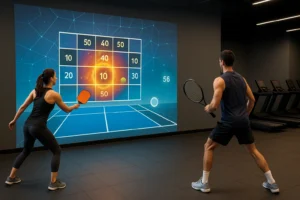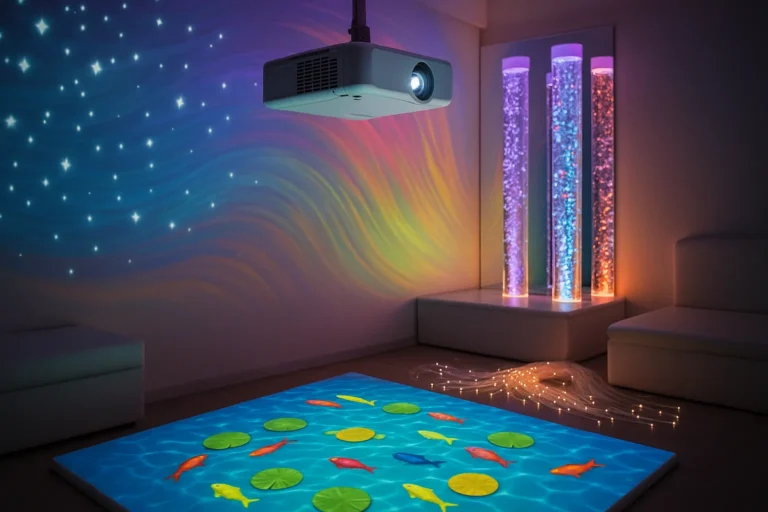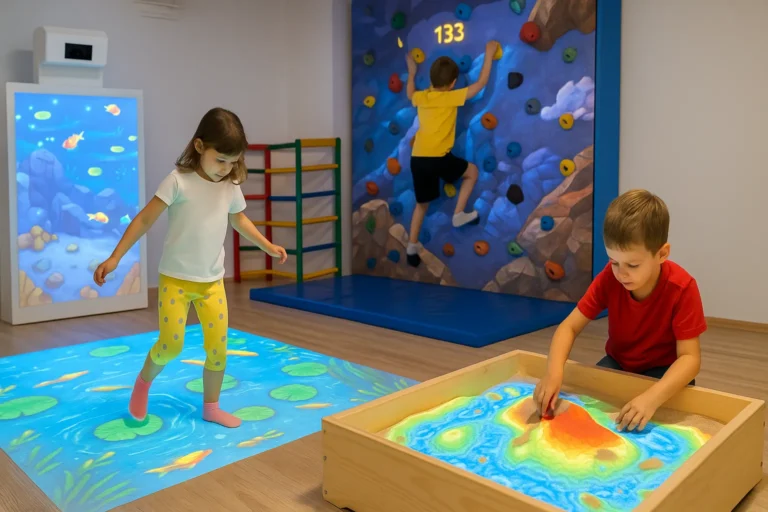You might have heard the phrase “balls to the wall” before, but what happens when it collides with an interactive projection game? Traditionally, “balls to the wall” means going full speed ahead with maximum effort. In the world of projection-based games, it takes on a literal and exhilarating meaning: throwing balls at a projected wall display as fast and hard as possible to achieve high scores and dynamic outcomes.
How Does a Balls to the Wall Interactive Projection Game Work?
The system behind a balls-to-the-wall interactive game is a combination of motion detection software, projection mapping, and impact sensors. 🎯 Here’s the basic process:
- A projector displays games or challenges on a blank wall.
- Players throw real balls toward the targets projected on the surface.
- Sensors detect the ball’s impact, speed, and position.
- The software reacts instantly, updating the game visuals, scores, and progress.
💥 Fast reflexes, high-speed throws, and strategy are key to winning!
The best systems use AI to adjust the difficulty dynamically, offering fun for all ages. You can easily find these setups available at entertainment centers, sports training facilities, and schools.
Why Are Balls to the Wall Interactive Games Becoming So Popular?
One word: Immersion. These games create a full-body, energetic experience unlike anything traditional arcade games offer. 🚀 Here’s why the latest setups are making headlines:
- Physical Engagement: Encourages exercise and coordination.
- Digital Adaptability: Multiple game themes can be loaded through software.
- Group Play: Multiplayer options foster competition and teamwork.
- Customization: Venues can buy, order, and tailor the system to fit their theme or customer base.
Key Features to Look for When Choosing a System
Not all balls-to-the-wall projection games are created equal. 🛒 If you plan to buy or order one, make sure you evaluate these features:
1. Software Flexibility
A robust game software should allow multiple games or levels to be played on a single projection setup. Look for systems offering updates from the manufacturer.
2. Sensor Accuracy
The best interactive projection games have highly responsive sensors that register ball impact instantly. Delays ruin the gaming experience.
3. Durability
The wall, projection surface, and software must withstand continuous use. Choose a supplier that provides commercial-grade durability.
4. Ease of Installation
Select a system from a company that includes a comprehensive installation guide or offers store installation services.
5. Cost Transparency
Compare the price between different suppliers. Ask about hidden fees like software licensing or hardware upgrades.
How Much Does a Balls to the Wall Interactive Game Cost?
💵 The price for a balls-to-the-wall interactive projection system varies based on the following:
- System Size: Larger projections cost more.
- Software Package: Basic packages are cheaper; premium ones with dozens of games cost more.
- Hardware Quality: Advanced sensor and projector technologies can raise costs.
Estimated Costs:
- Entry-Level Systems: $3,000 – $5,000
- Mid-Range Professional Systems: $7,000 – $12,000
- Custom Installations: $15,000+

Should You Invest in a Balls to the Wall Interactive Game?
Absolutely. ✅ Whether you are a school administrator, gym owner, arcade manager, or family entertainment center operator, adding a balls to the wall interactive projection system can drive:
- Higher engagement
- Better customer satisfaction
- Increased physical activity
- Competitive edge over traditional arcade setups
If you are ready to bring the latest, best, and hottest interactive gaming experience to your venue, it’s time to explore available systems, compare price options, and order from a reputable supplier or manufacturer!
Leading manufacturers design these systems to withstand thousands of impacts, making them highly durable for commercial use.
Yes! Many suppliers offer custom game designs or software updates, allowing you to match the game themes to your brand or event.
Basic maintenance like projector cleaning and occasional software updates is typical, but costs are generally low if purchased from a reputable company.















